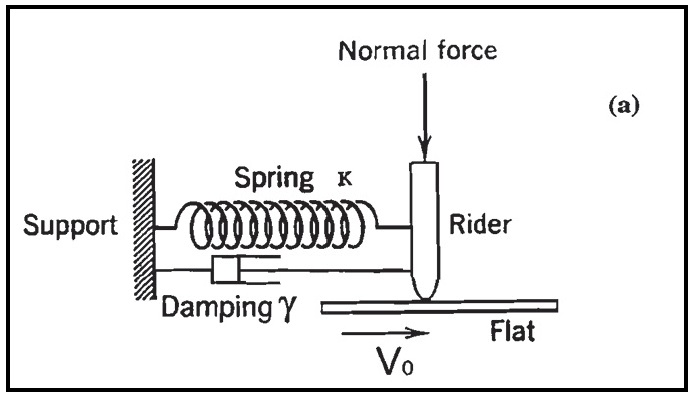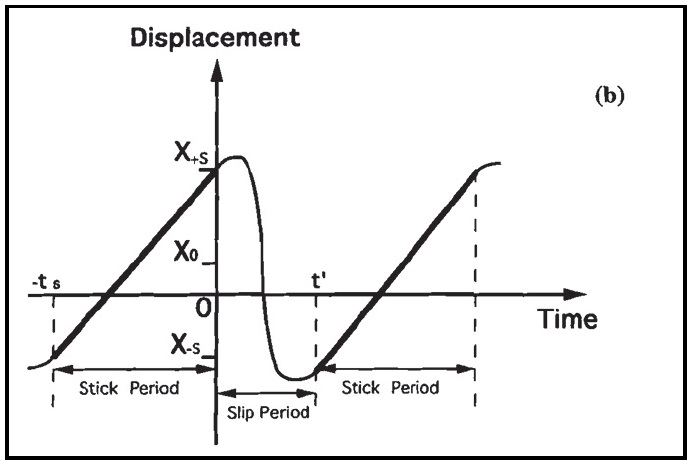Slip-stick: What’s it all about?
Dr. Robert M. Gresham, Contributing Editor | TLT Lubrication Fundamentals June 2011
The phenomenon occurs when static friction and kinetic friction cross swords.

Slip-stick makes the cello beautiful and the squeaky door annoying.
www.canstockphoto.com
People don’t often talk about “stick-slip” in every day conversation, even among us tribologically oriented folks. Yet, stick-slip phenomena are all around us, often with both good and bad consequences. For example, we get beautiful effects in stringed instruments, not so beautiful squeaky doors, so-called stiction in computer disc drives, severe wear and seizing in various sliding components and jerking and chatter in brake systems.
In basic lubrication courses, stick-slip is often a difficult concept to explain. Stick-slip is generally a dynamic cyclic process where two mating surfaces oscillate between a stick phase and a slip phase.
In the stick phase, the two surfaces are not in motion and are held in place by so-called static friction. In the slip phase, there is finite relative motion—so-called kinetic friction acts to retard this movement.
What makes all this work is that generally static friction is greater than kinetic friction for a given system. So starting with two non-moving objects with their surfaces in contact under some load, when force is gradually applied to move one object (surface) relative to the other, there is resistance to movement until sufficient force is applied to overcome the static friction. When this happens, the one component breaks away, rapidly accelerating until it reaches the same velocity as the other moving component. At that point, there is no relative motion between the two and static friction ensues, holding the components back in place. Assuming the initial force that was originally applied continues, the cycle repeats itself. This phenomenon can be demonstrated with a simple spring and slider arrangement (
see Figure 1(a) and (b)).
 Figure 1 (a). Schematic diagram for the dynamics of the pinon-disc device. K, γ, and V0, are the spring constant, the damping coefficient, and the substrate velocity, respectively.
Figure 1 (a). Schematic diagram for the dynamics of the pinon-disc device. K, γ, and V0, are the spring constant, the damping coefficient, and the substrate velocity, respectively.

Figure 1(b). Schematic illustration of the displacement as a function of time in stick-slip motion.
These forces, static and kinetic friction, are somewhat complicated and can be time and relative velocity dependent. If the substrate speed decreases, the amplitude of the stick-slip process is greater because there is more time for the static friction to maximize; thus more force is needed to effect movement, resulting in a larger displacement or amplitude.
Conversely, as the substrate speed increases, the amplitude decreases because there is less time for static friction to build. At some point as the speed increases, the amplitude is so small that the stick-slip process ceases. Further, surface roughness and the presence of a lubricant (which can even be a soft surface film) can impact the amplitude and velocity of the cycling and even whether there is a pronounced stick-slip. These processes for the most part occur in the boundary regime. For more information on all this, I recommend you read a great
Tribology Transactions paper by Chao Gao. STLE members can access the paper for free by logging on to
www.stle.org and linking to the
Transactions page.
In the country song, “Devil Went down to Georgia,” Charlie Daniels sings, “Johnny rosin up your bow and play your fiddle hard. ‘Cos hell’s broke loose in Georgia, and the devil deals the cards. If you lose, the devil gets your soul.” Johnny, being an astute tribologist, is trying to increase the amplitude of the stick-slip process acting on the fiddle string to help himself outplay the devil.
REFERENCES
Gao, C. (1995), “Stick-Slip Motion in Boundary Lubrication,”
Tribology Transactions,
38 (2), pp. 473-477.
 Bob Gresham is STLE’s director of professional development. You can reach him at rgresham@stle.org
Bob Gresham is STLE’s director of professional development. You can reach him at rgresham@stle.org.